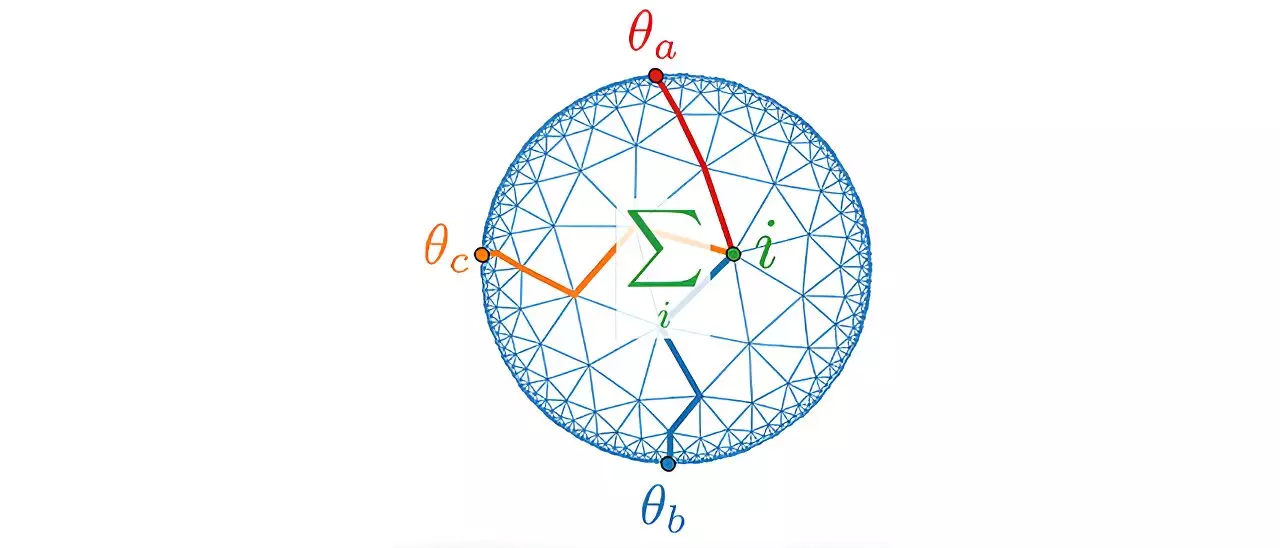Gravity, a fundamental force that governs the motion of celestial bodies and the behavior of objects on Earth, has puzzled scientists for centuries. At a macroscopic level, we have made remarkable strides in understanding gravitational forces. Predicting planetary orbits, accurately calculating tides, and successfully launching spacecraft are all feats achieved through our increasing understanding of classical gravity. Yet, as we delve deeper into the fabric of the universe, particularly at the quantum scale, the relationship between gravity and quantum physics remains enigmatic.
Modern physicists have begun to recognize that the laws of classical gravity break down in extreme scenarios—namely, at the quantum level, where particles exhibit behaviors that defy classical physics. Professor Johanna Erdmenger, a prominent theoretical physicist at the University of Würzburg, emphasizes the urgency of reconciling these two realms of physics: “To explain the Big Bang or the interior of black holes, we must uncover the quantum properties of gravity.” This underscores a significant challenge in theoretical physics: developing a unified framework that encompasses both the classical and quantum descriptions of gravity.
One of the most promising approaches in tackling this monumental challenge is the Anti-de-Sitter/Conformal Field Theory (AdS/CFT) correspondence. This theoretical construct posits that complex gravitational theories existing in a high-dimensional curved space can be effectively represented through simpler quantum theories at the boundary of this space. The intricate connection between these two frameworks offers a pathway to understand phenomena that currently elude physicists.
At first glance, the concepts of AdS and CFT may seem daunting. AdS represents a type of spacetime that curves in on itself, while CFT describes quantum systems exhibiting uniform properties across various distances. However, as Erdmenger elucidates, the core idea of AdS/CFT is akin to a hologram: it suggests that quantum dynamics at the boundary of a “funnel” of spacetime mirror the more convoluted gravitational dynamics within. In much the same way a holographic image projects depth despite being flat, this correspondence proposes that underlying quantum processes can inform our understanding of gravity.
Despite the theoretical robustness of the AdS/CFT correspondence, experimental validation remains crucial. Erdmenger and her team have made significant strides in this area by designing an experimental setup intended to test the predictions derived from the correspondence. By utilizing a branched electrical circuit, they are able to simulate the intricacies of curved spacetime. The electrical signals produced at various junctions in the circuit correspond to gravitational dynamics across this mimicked space, thus enabling empirical observation of the theoretical predictions.
Their groundbreaking research, published in the journal Physical Review Letters, aims not only to advance our understanding of gravitational theories but also to unlock potential technological innovations. As Erdmenger notes, “Our circuits also open up new technological applications.” The advent of circuits based on quantum technology promises to enhance the efficiency of electrical signal transmission. Mimicking the curvature of space, these circuits have the potential to minimize signal loss by stabilizing and concentrating the electrical flow.
The journey towards a comprehensive theory of gravity involves interdisciplinary collaboration, merging ideas from theoretical physics, experimental practice, and technological application. As researchers like Erdmenger take bold steps forward in validating key theoretical predictions, we inch closer to understanding the enigmatic forces at play in our universe. The ramifications of such discoveries may be profound—not only altering our grasp of fundamental physics but also ushering in technology that could revolutionize electrical engineering and quantum computing.
As the boundaries of science expand, the quest to unravel the mysteries of gravity promises to ignite further curiosity and inquiry, propelling humanity toward new horizons of knowledge. The intersection of gravity and quantum mechanics may be our next frontier, and the forthcoming discoveries could redefine our understanding of the cosmos and the very nature of reality itself.

